In the wilds of barbed wire. H.1
This series of articles is about the features of the defensive positions of the Russian Front of the First World War. We can look at the power of positional defense in 1915 - 1917.
Both in a maneuverable and positional war, troops advance or defend. Because in a positional war, the sides stand against each other for a long time, the defensive art is largely transformed and improved.
Germans stretch barbed wire. The great war in the images and paintings. Issue 11. M., 1916.
Under the conditions of a “positional impasse”, the attacker had to break through the enemy's echeloned defense.
The standard defensive position of the positional warfare period included 2 - 3 reinforced lanes, which were located 3 - 4-km distance from each other - so that the enemy could not cover all the lanes with artillery fire at once. Each of the bands included 2-3 trench lines (distance between 100 lines - 300 steps). Accordingly, each line consisted of a continuous series of trenches and flanking (i.e. leading fires along the front of the fortification - to avoid dead spaces) each other’s resistance nodes or strong points located in 1-2 thousand steps from each other. The trenches were covered with wire fences. Resistance centers (strong points) included villages, cemeteries, groves, etc., adapted to the defense, or a whole system of trenches. The joints between the strong points could be strengthened (sometimes directly in the line of the trenches or behind it) by closed field fortifications.
Fortified positions of Russian troops in the presence of three shooting lines. Manual to fight for the fortified bands. Ed. Headquarters Special Army, 1916.
By the end of 1915, the basic requirements for defense in a positional war were as follows. The strength of the defense was seen: a) in a well-organized shelling of the ground in front of a defensive position; b) in safe havens; c) powerful obstacles; d) in the development of a defensive system in front and in depth; e) in creating favorable conditions for maneuvering reserves. The strengthened position had to neutralize the most important advantage of the attacker, freeing the defender from the need to obey the initiative of his active opponent. In addition, the terrain features were played on defense, and the resistance force increased significantly. Being almost completely hidden from the eyes of the enemy, the defender met the enemy with fire of all kinds weapons on a pre-adjusted terrain.
The first rifle line. Manual to fight for the fortified bands. According to the instructions and edited by the commander of the 5 army of the general from the cavalry Gurko.
If the defensive position was held for a long time (a vivid example is the Dvinsk front from the autumn of 1915 to the spring of 1918), then the defender could achieve outstanding results in organizing fire and improving positions - the terrain is carefully targeted by machine gun and artillery fire, each tactically valuable point of the terrain acquires its role in the defensive system.
The highest importance was attached to the heights dominating the surrounding terrain, positions that allowed the enemy to be hit with flank fire, as well as key positions - without which defense would become impossible. They were called strongholds. Moreover, tactical and strategic keys of positions differed. The latter were on the path of retreat or the approach of the defender's reserves. The loss of the strategic key entailed the isolation and destruction of the defending unit or unit. If tactical and strategic keys were combined in one strong point - it acquired an extraordinary importance.
In relation to the front line, the positions were divided into intermediate (located on the defensive line) and flank. The first served to defend against the direct (frontal) offensive of the enemy, the second - to counter the bypass or flank coverage. The strongholds located in front of the position were called forward, located inside the position — second-line (helped the defender, pushed back from the front, to hold on to the internal space of the position), and in the rear — correspondingly rear (their purpose was to repel the enemy who took the main positions and subsequently knock out him with them). The group of such strongholds that were in the fire interconnection was called the node of resistance.
For better lumbago approaches to the position, the terrain in front of the trenches was cleared on 1,5-2 km. Special attention was paid to neutralizing dead spaces in front of the positions.
The basic element of the position is a full profile rifle trenches. Such a trench was intended for firing while standing, and was equipped with parapet, dugouts (“roviki with a roof of poles, over which the ground is poured”) and an internal moat. The shelling from the trench (without the presence of dead spaces) along the front was no less than 200 steps, and the review was no less than 1 thousand steps.
Chronicles of the war 1914 - 15 - 16 No. 87.
The trenches for firing standing and the course of communications were called trenches, and the trenches for firing from the knee or lying - lodgments.
Trench for shooting from the knee.
Trench for shooting standing (with steps). Manual on self-infantry infantry. SPb., 1909.
Since the front edge of the defense was under scrutiny from the enemy's fire weapons, special shelters were built at a distance of up to 100 - 300 steps behind the battle line - they housed free (not involved in advanced trenches) fighters.
The great war in the images and paintings. Issue 5.
A full-fledged trench had loopholes or visors (to protect against shrapnel bullets) and rear traverses (traverse - a fence covering the shooters from flying debris and from longitudinal fire during frontal shelling, consisting of 2-x rows of boards or wickers). Loopholes defended from machine-gun and rifle bullets (built from sacks of earth, sod logs, etc., loopholes were sometimes replaced with rifle shields), and visors from light debris and shrapnel bullets (2-inch boards were used for this purpose) sprinkled with earth). Visors allowed defenders of the trenches to conduct small-arms fire for a long time over long distances - under constant enemy artillery fire covering the offensive of their own infantry. Since the enemy artillery fired a skew-targeting fire almost to the full approach of its infantry to the Russian trenches, the value of the visors cannot be overestimated. Indeed, in the absence of visors, Russian infantrymen could fire only after the termination of enemy artillery fire - and until that moment the soldiers had to lie down at the bottom of the trench or hide in shelters.
But the visors and loopholes could not protect against a direct hit by a projectile (especially a large caliber), and, moreover, they unmasked the trenches. The instructions prescribed that in order to disguise, before the start of fire fighting, they should be kept plugged (with any material at hand - straw, grass, earth bags, leaves), and during firing (so as not to shine through) with curtains of tents behind them.
To conduct skew-target firing or to increase the number of shooters, even deep trenches, in addition to firing through loopholes, were adapted for firing on top of a visor or a parapet - and supplied with steps or stepladders. In addition, the ladders and steps were especially important when carrying out counterattacks and grenade fights.
To protect against splinters in case of a direct hit by a projectile, the trench was made zigzagging (that is, with corners or kinks — the length of the 12 fracture — 16 steps). Inside the long-term trench sheathed poles or fence.
In order to prevent the penetration of enemy soldiers who broke into positions, along the entrenchment, wooden bulkheads with barbed wire, earthen bags, hedgehogs, slingshots, frames (protected from hand grenades) with a smooth wire net, etc., were stored in special niche rooms.
The construction of the trenches.
Pictures of war. M., 1917.
The parapet (the embankment in front of the trench) was poured in such a way that the fighters, without even aiming, but only putting the rifle in the space provided for it on the parapet, could fire at the approaches to the position. Since the German shells gave a large number of fragments, the Russian instructions ordered to make trenches narrower (the recommended width along the bottom was three quarters of a step) and deep. Deepening the profile of the trench should be carried out by reducing the parapet, at the same time, it improved the masking.
Loopholes of sandbags (plan). Instruction on military engineering. SPb., 1910.
Chronicles of the war 1914 - 15 - 16 No. 87.
Chronicles of the war 1914 - 15 - 16 No. 75.
Between the shelters and the battle line, as well as to the trenches, for the placement of reserves, communication lines were laid - zigzag deep ditches, which served both for the transfer of subunits and units to the front line, and for moving to the rear. The side of the message turned to the enemy was covered with an embankment.
The progress of the message. Manual on self-digging.
The progress of the message.
The message moves.
Blindage is the most powerful trench structure. Blindage could even withstand large-caliber shells. Standardly, it was calculated on 15 - 25 man, had splinter and anti-gas bulkheads, two exits, and was connected by communication with the trench. It is imperative that the mound above the dugout does not exceed the height of the mound of the equestrian trench.
In the trenches there were living quarters (dugouts) and shelter-slits (earthen caves or fox holes designed for 10 - 12 people). Lieutenant K. Popov noted that in many parts the accumulation of officers in one dugout was forbidden - in order to avoid mass death of commanders when hit by a shell. From the inside, the dugout was lined with straw, the floor was laid with boards, and bunk beds were installed.
German bunk dugouts.
Chronicles of the war 1914 - 15 - 16 No. 75.
Chronicles of the war 1914 - 15 - 16 No. 80
The organization of observation posts for various purposes, which were supposed to withstand heavy projectile hits and provided with periscopes for conducting observations and telephone communications, was carefully regulated.
Observation post. Drawing. Guidelines for strengthening positions. Ed. Headquarters of the Supreme Commander, 1916.
Dugouts.
In order for the shelter to reliably protect against heavy projectiles, the required thickness of the overlap is the 3 row of logs (“three rolls”, each barrel had a thickness of 18 - 27 cm) plus the 2,5-meter earth mound. For the greatest strength, stone powder was made in the earthen top layer, causing a premature explosion of the enemy projectile — before the latter penetrated deep into the pillow. To give overlapping spring properties across the bottom row of logs, 18-27 cm thickness was laid out as well.
Niva. No. 45. 1916.
Chronicle of the war 1917. No. 125.
Device shelter Scheme. Guidelines for strengthening positions. Ed. Headquarters of the Supreme Commander.
The blockhouse was a solid wooden blockhouse, sprinkled on the outside with earth, with an elbow stop and equipped with loopholes for firing. Often, well-camouflaged lunettes and blockhouses were in front of the position, connecting with communications trenches. Equipped with machine guns and well disguised, they were effective forward firing points protecting the approaches to artificial obstacles. Many blockhouses located behind the trenches of the first line, in the depths of the defense - so that their fire was a surprise for the enemy to break through.
Blockhouse in the defense system. Guidelines for strengthening positions. Ed. Headquarters of the Supreme Commander.
Closures for reserves were created - special moats serving for the hidden concentration of units. The closures were ordered to be built behind the reverse slopes of the heights, equipping them with reliable communication lines and, if possible, making them covered.
Progress messages intended for the accumulation of troops, often equipped with special barriers and extensions. The width of the normal course of the message made it possible to carry a stretcher with the wounded, and the device - to allow to place military equipment and protect from falling. According to the existing 1 standards, the message flow relied on every 100 - 150 meters of trenches. The moves, as well as the trenches, were carried out in a zigzag or snake manner and, if possible, adapted to the defense.
The course of the message and dugout.
For the convenience of carrying out counterattacks, special transitions through trenches were constructed. And for carrying out attacks, searches, for sudden strikes to the rear and the flank, attacking enemy units from the closures for reserves and internal moats of the trenches were climbed (covered passages of messages) - they were well disguised and brought to the neutral strip, to the dead spaces, to the wire barrage. With a large number of such Lazov provided the opportunity to actively pursue the enemy, cut off retreating, to prevent suitable reserves.
Closing for reserves. Manual on self-infantry infantry. SPb., 1909.
Often the key positions were closed fortifications - the so-called. redoubts. Redoubt is a polygonal closed defensive structure, the garrison of which did not exceed, as a rule, one company. Redoubts were created, as a rule, at commanding heights, had their own artificial obstacles and obstacles and were in close fire interconnection. Such an enhanced autonomous defensive position in a key tactical area was an important obstacle to the breakthrough of defense.
Field reinforcement (redoubt). Manual on military engineering for all branches of the military. SPb., 1910.
Particular attention was paid to the defender to disguise fortifications - because when unmasking their positions, a hail of grenades, bombs, mines, and, of course, enemy artillery shells awaited them.
Watching the enemy.
At the loopholes during the lull.
In a positional war, the density standards for rifle defense are up to 3's steps per fighter. Such a sparse system contributed to the overall strength of the fortifications, the long duration of finding the fighters in position and the increased (due to a well-thought system) the effectiveness of the fire.
In a trench during a shootout.
Construction of trenches.
Repair trenches.
Construction of trenches with an excavator.
Chronicles of the war 1914 - 15 - 16 No. 89.
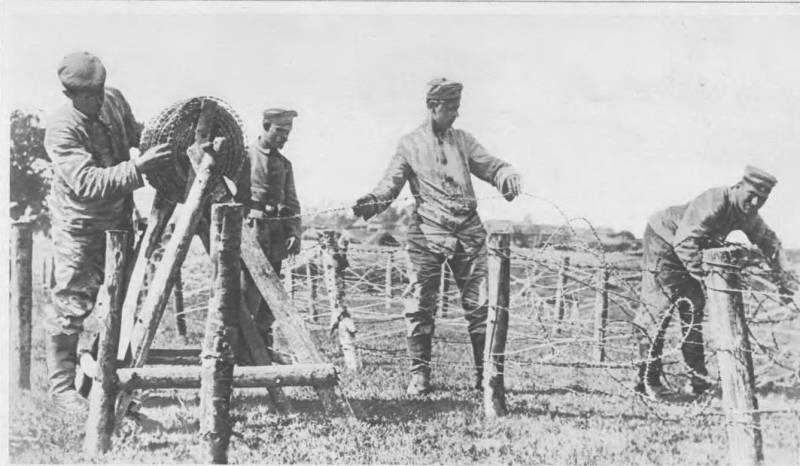
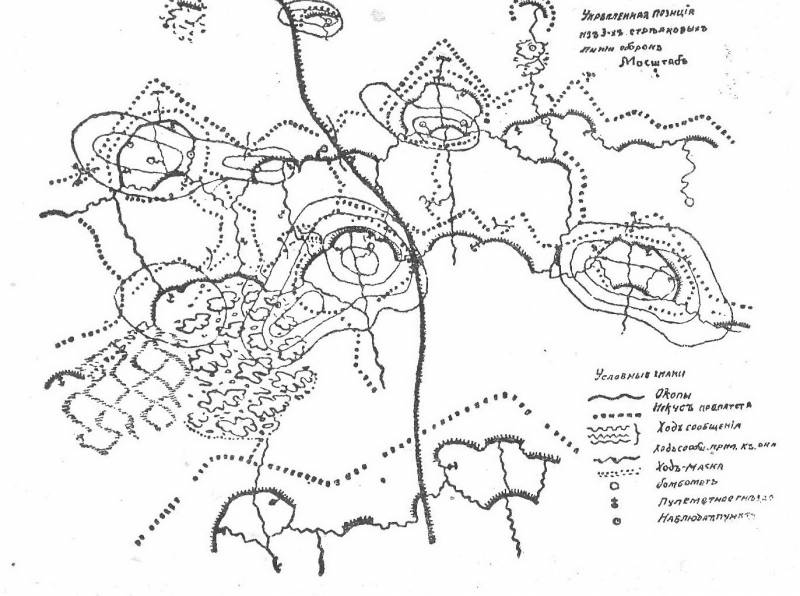
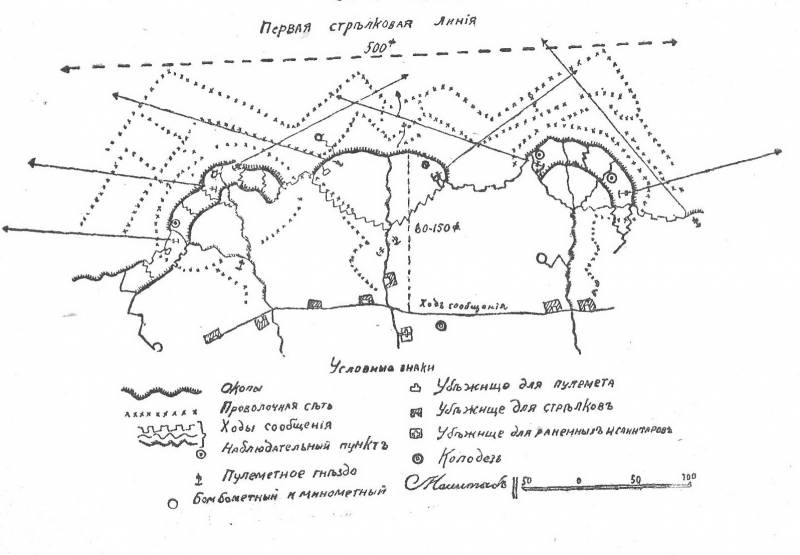
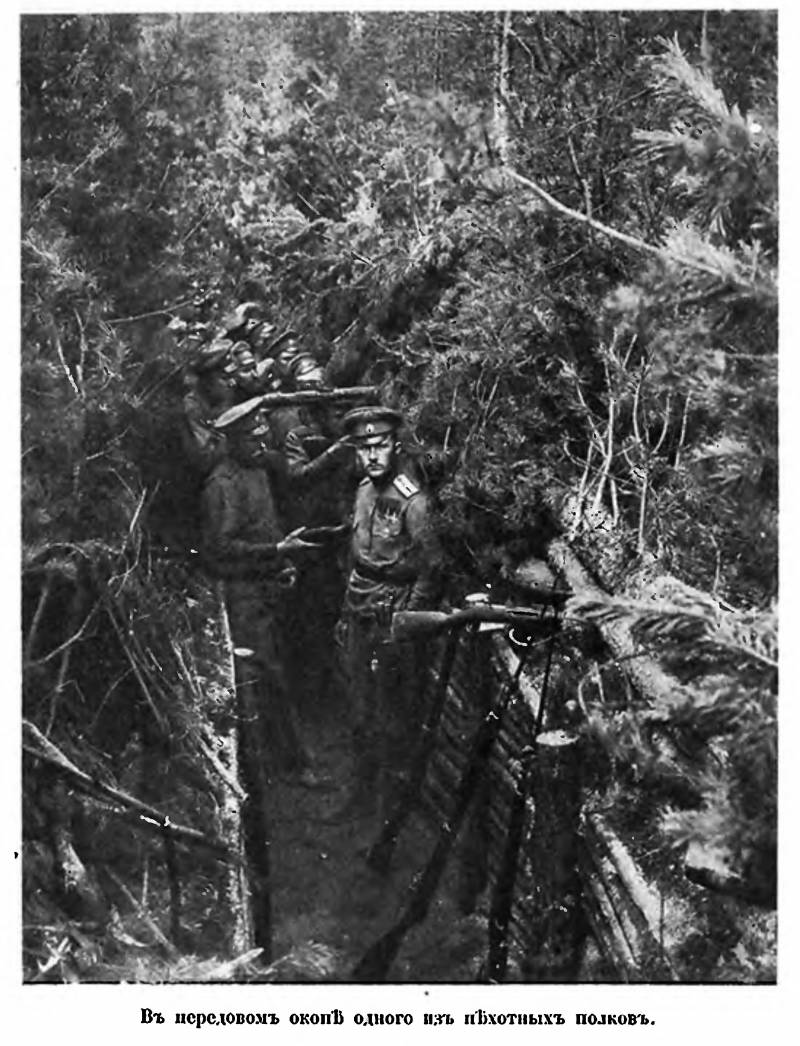
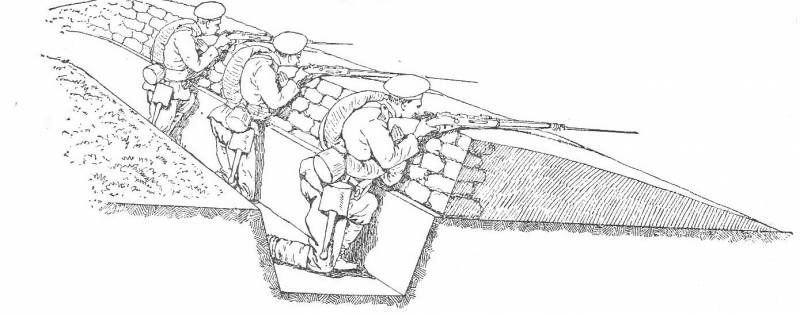
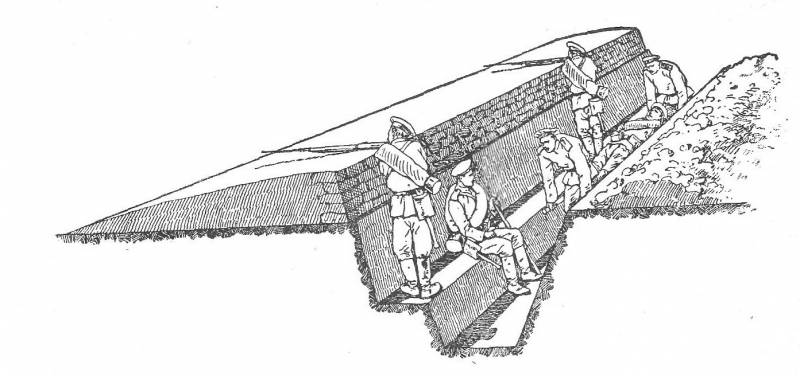
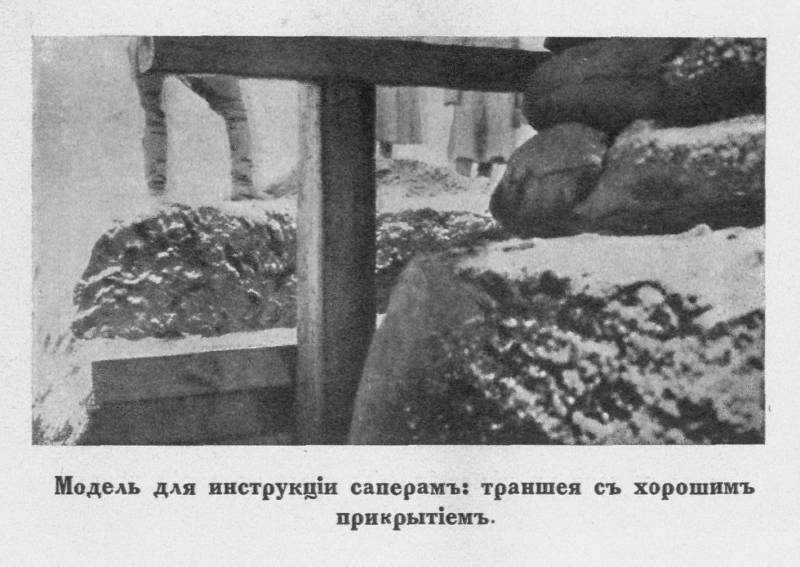
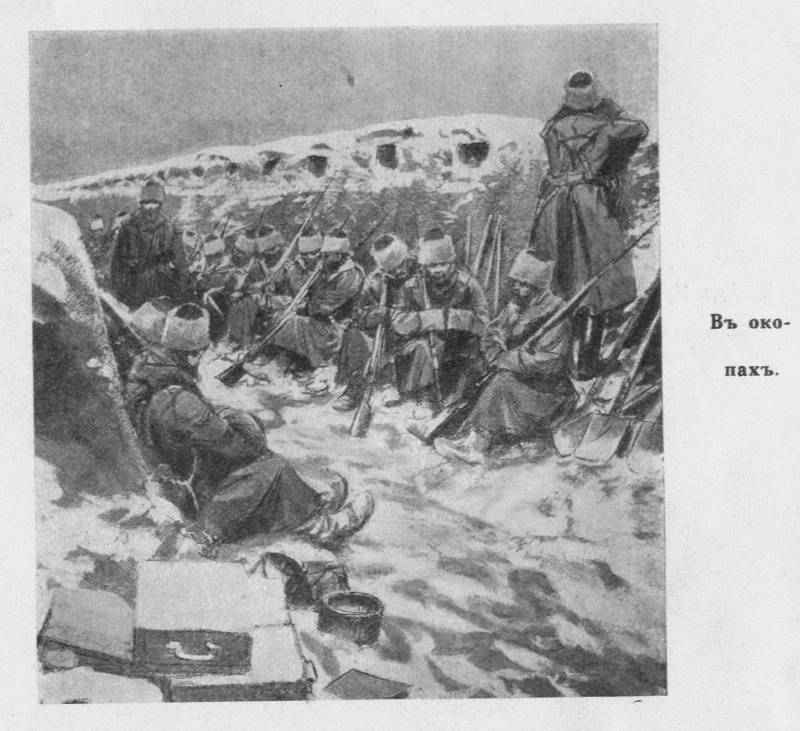

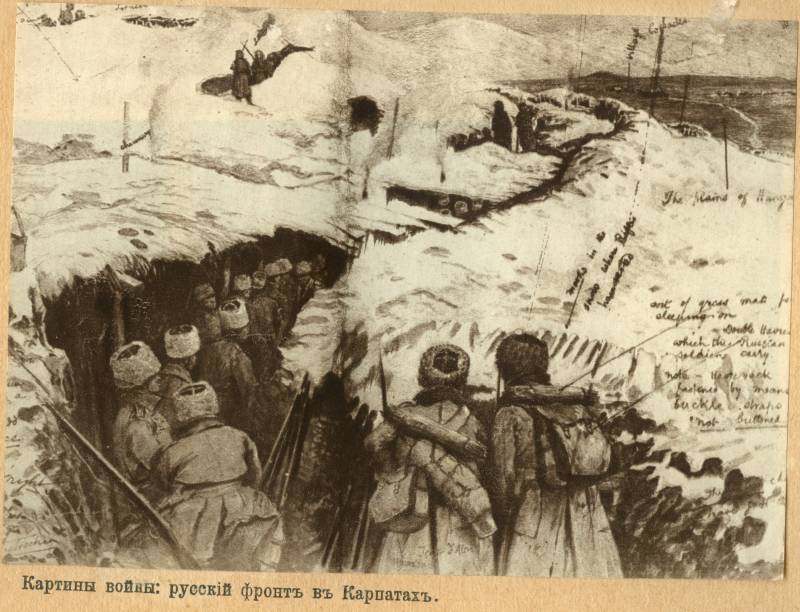
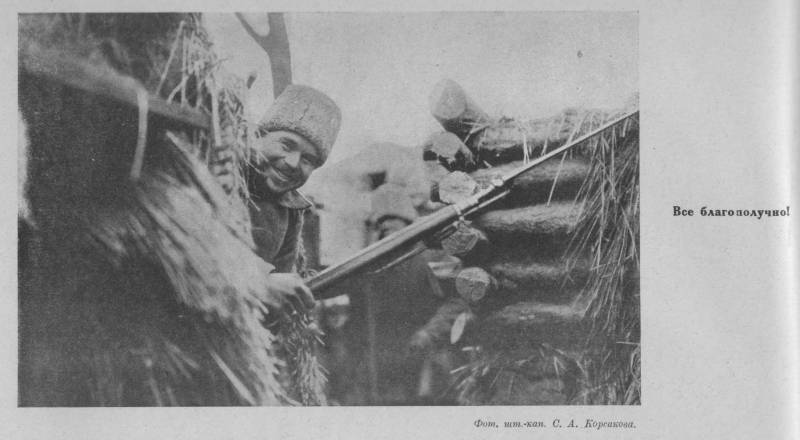
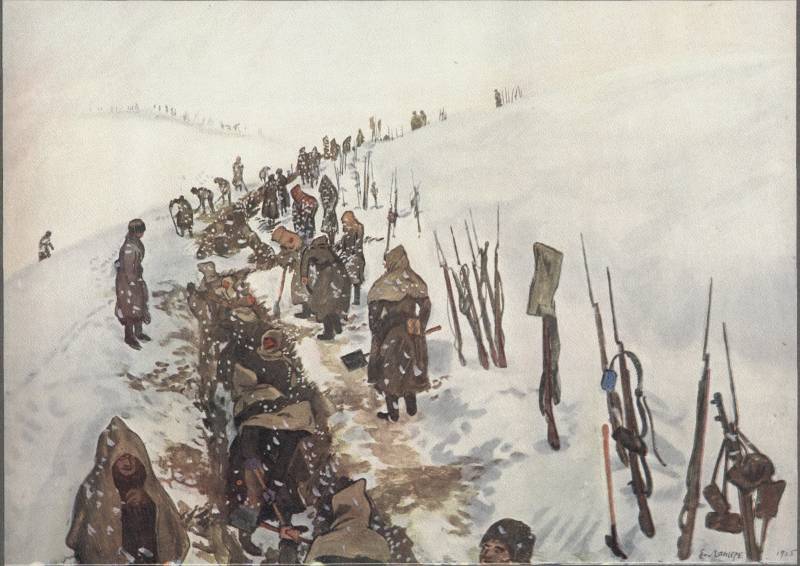
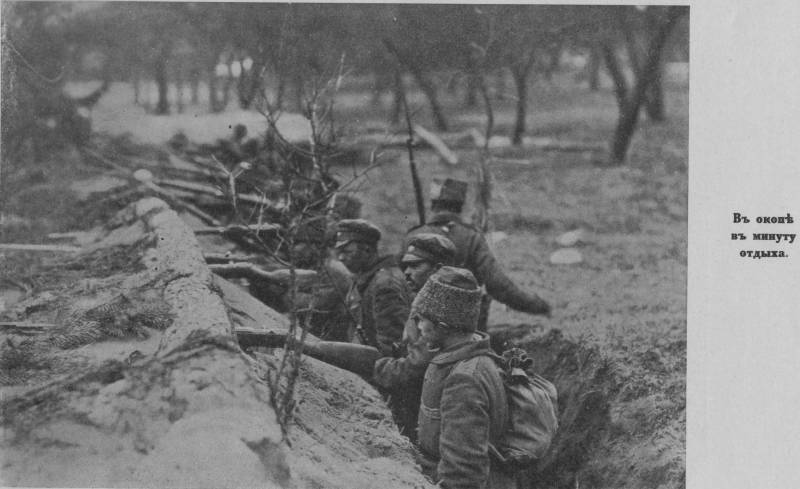
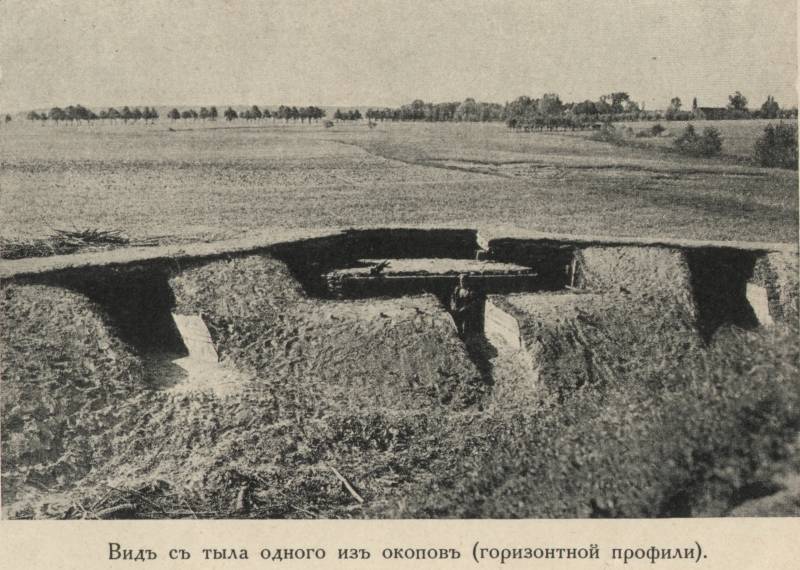
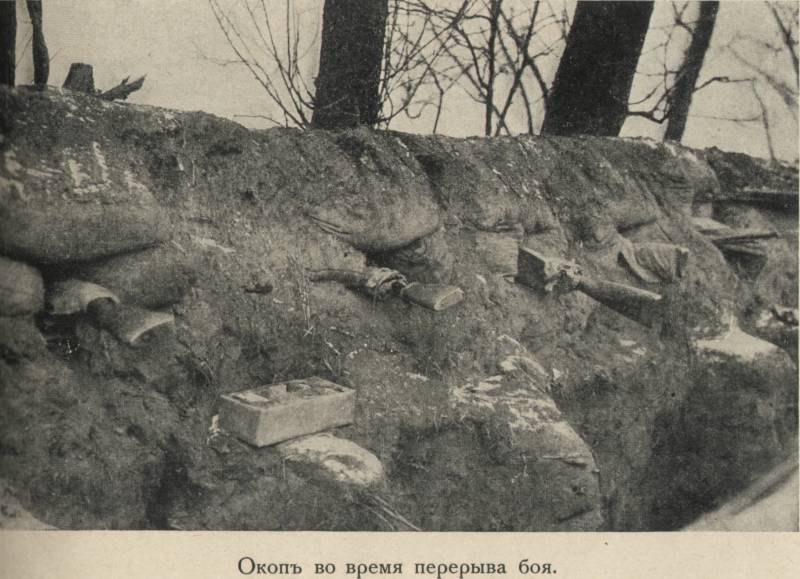
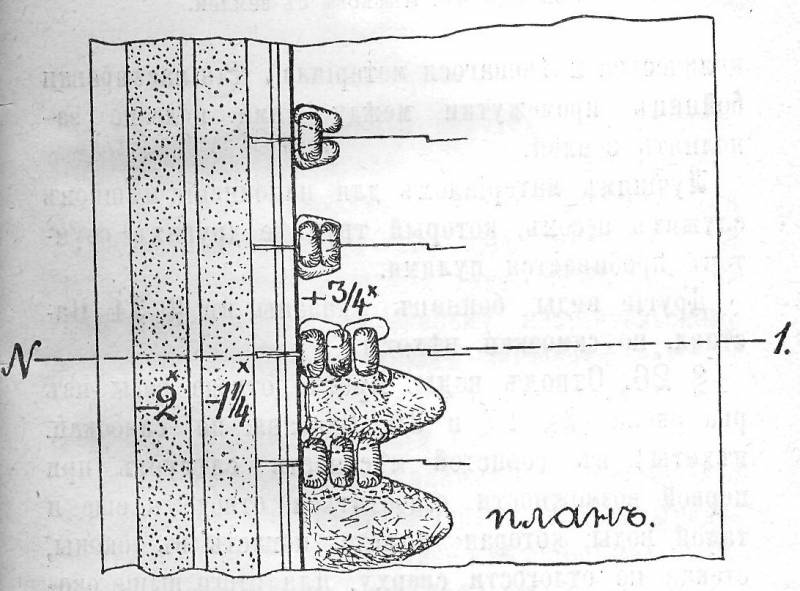
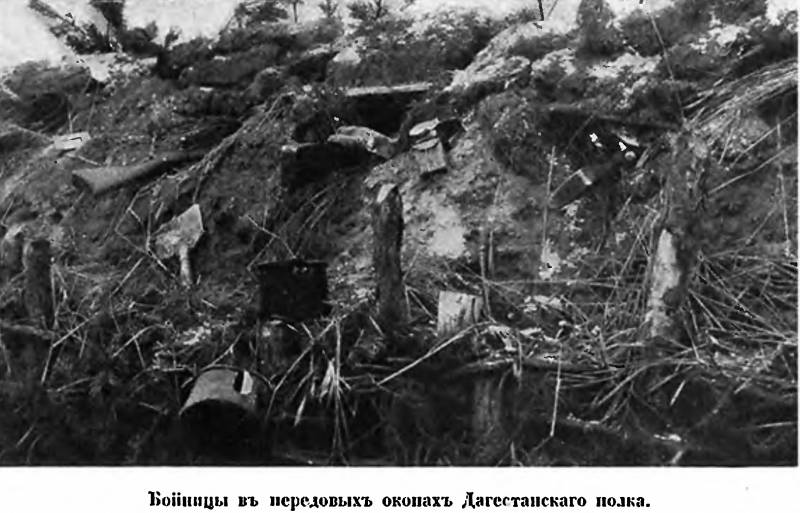
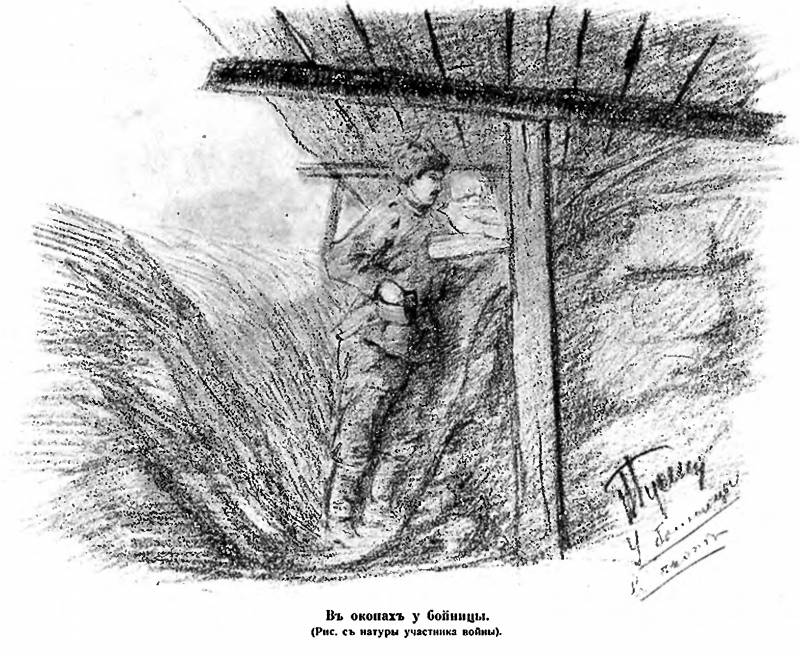
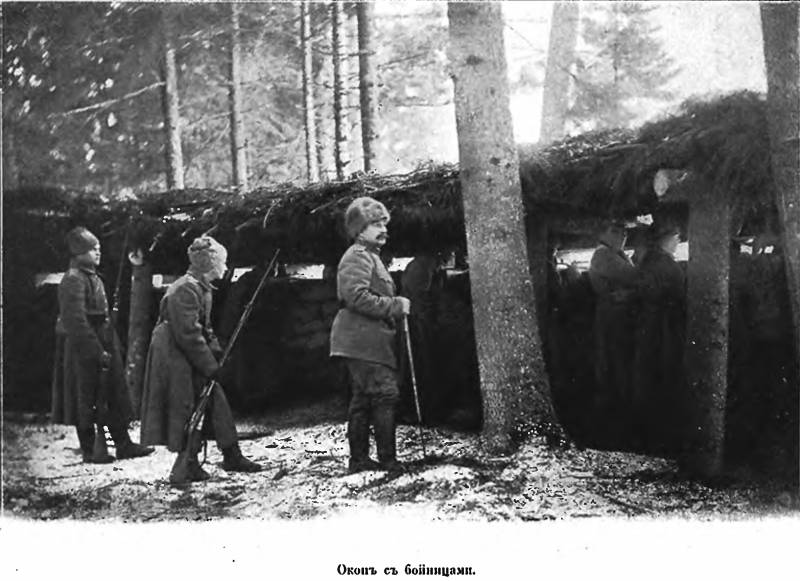
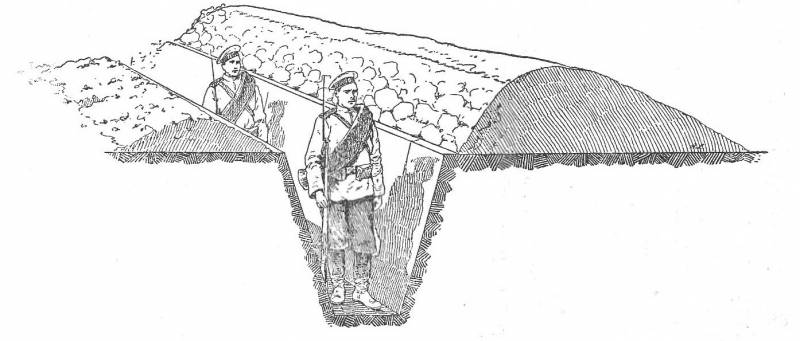
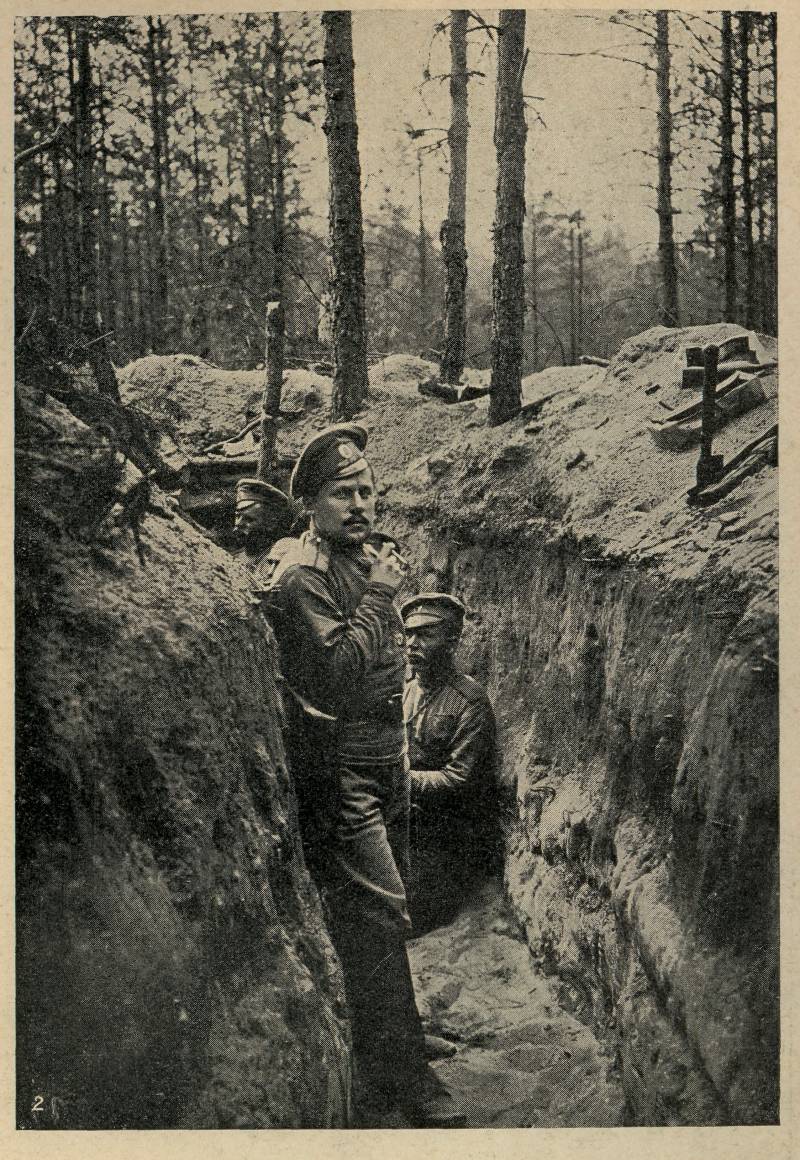
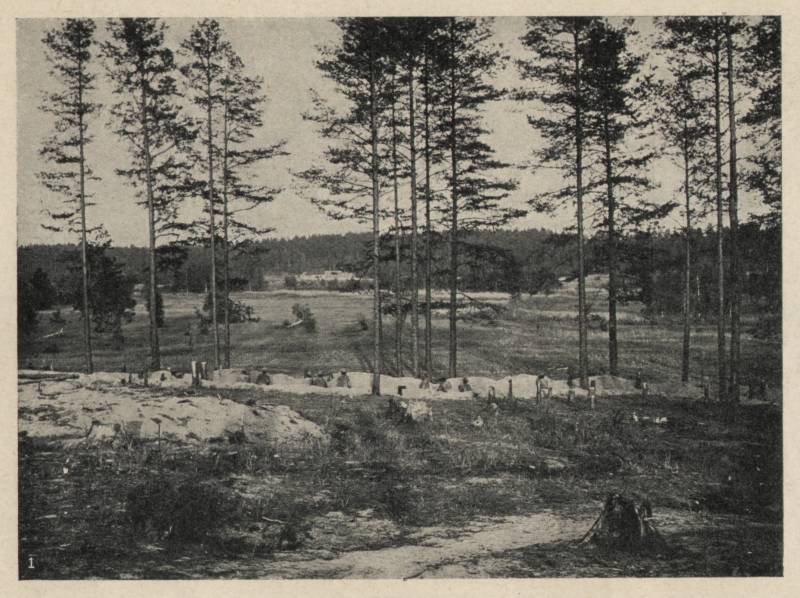
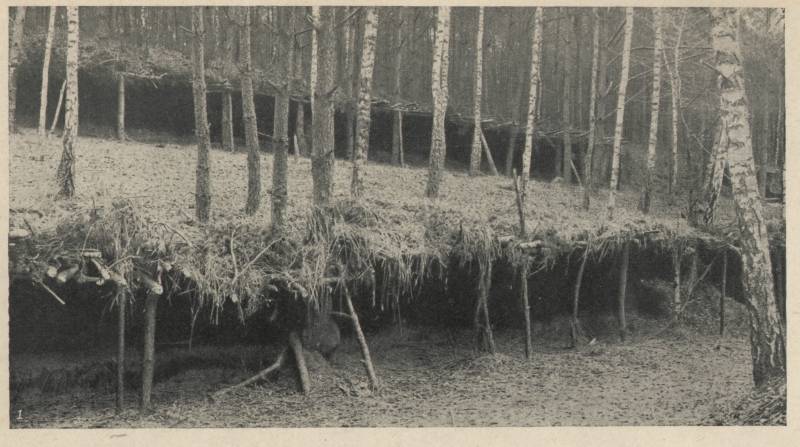
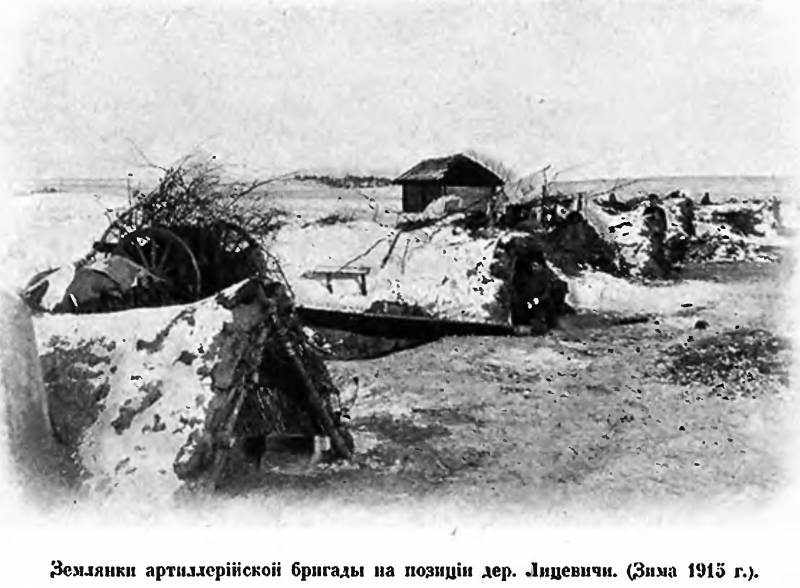
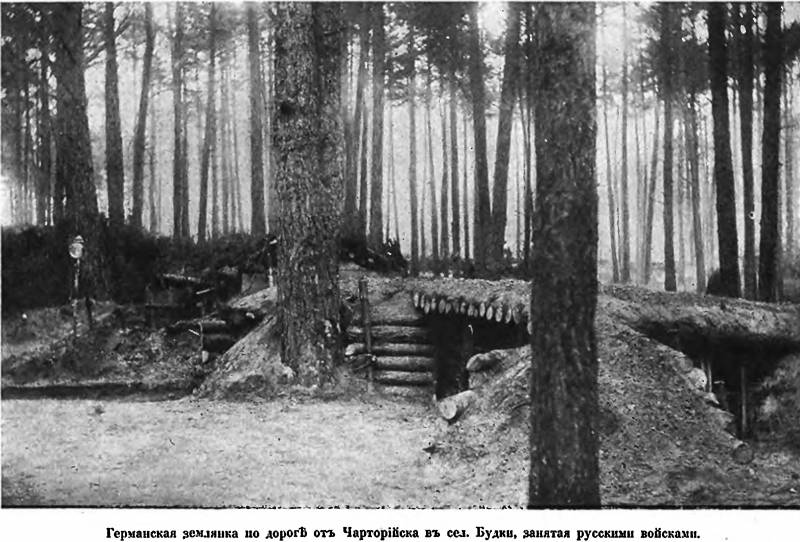
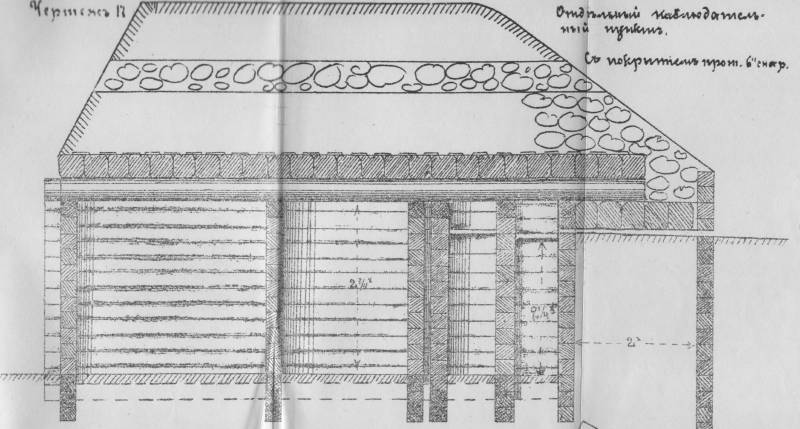
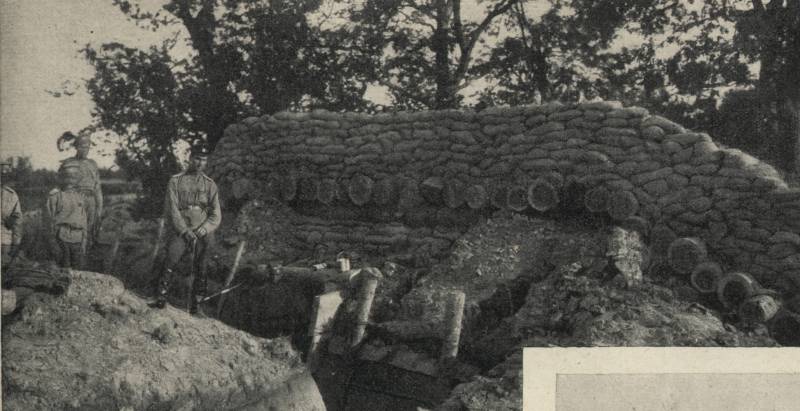
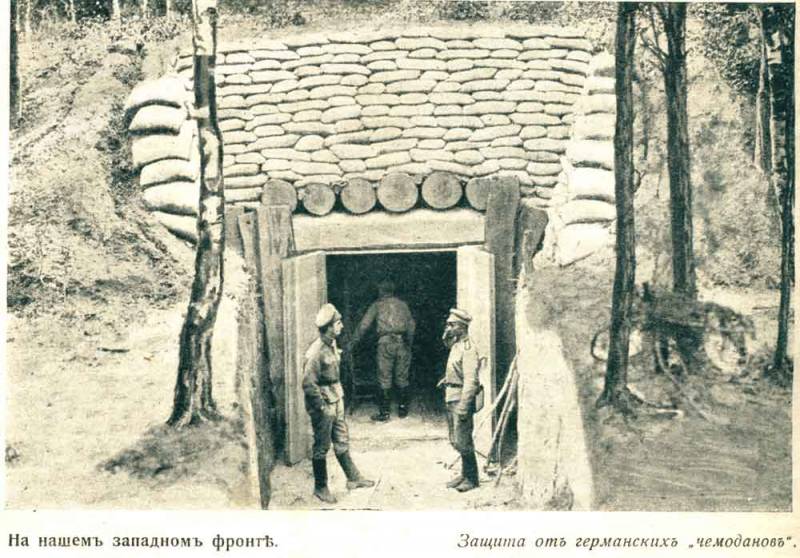
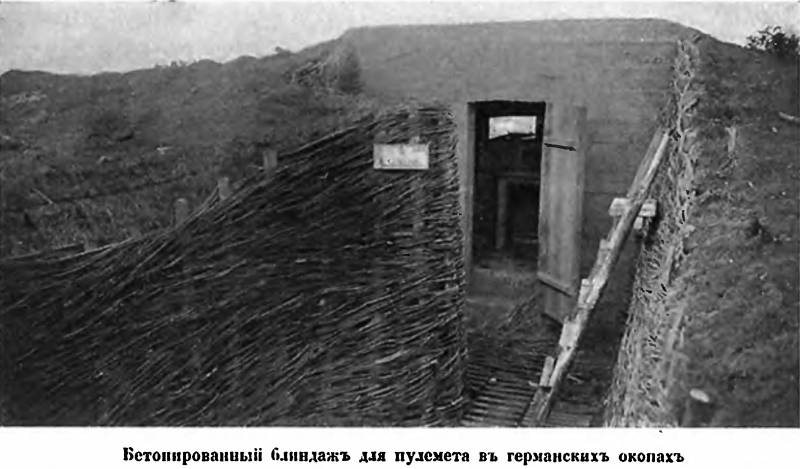
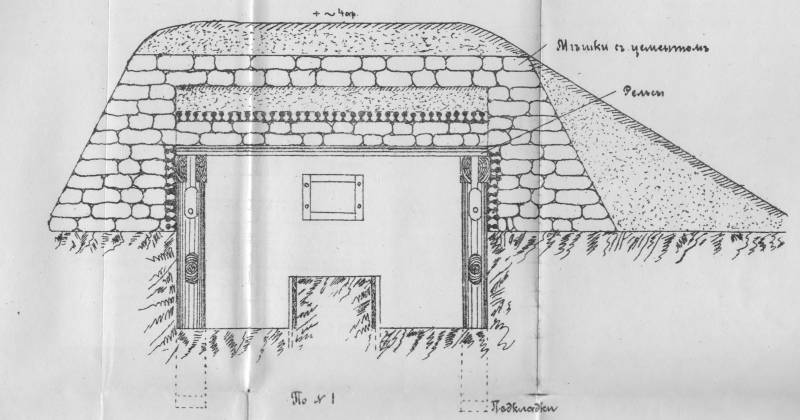
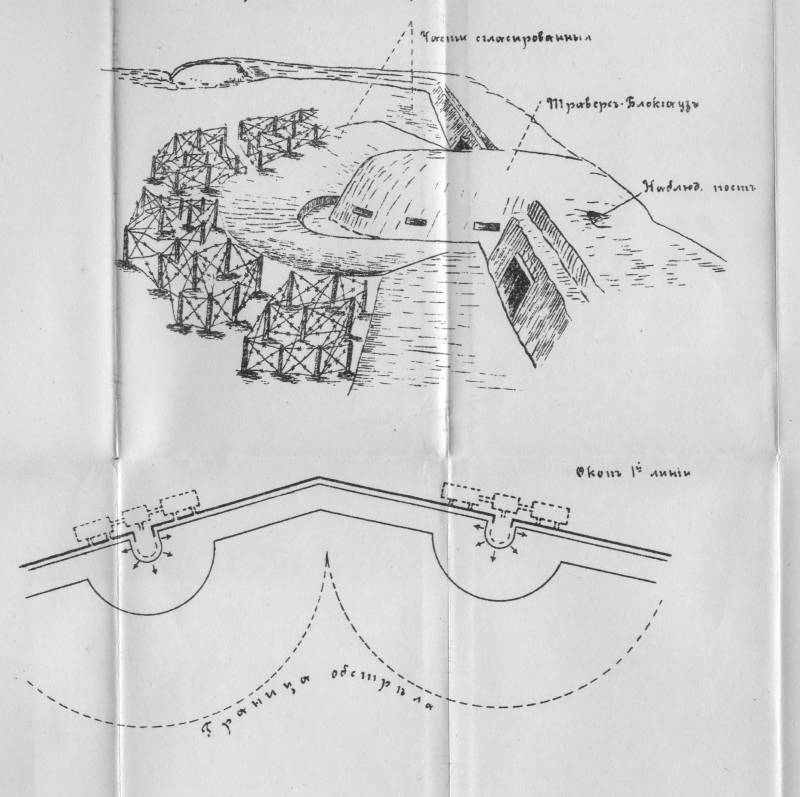
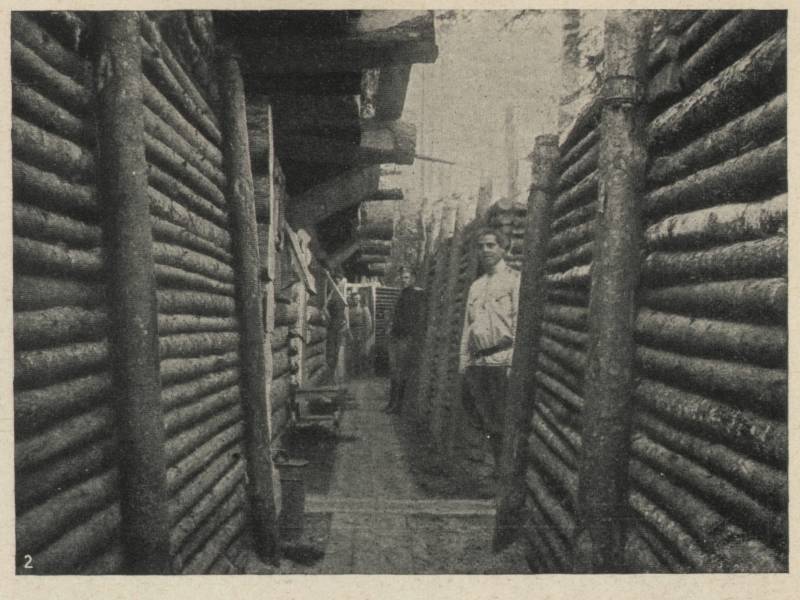
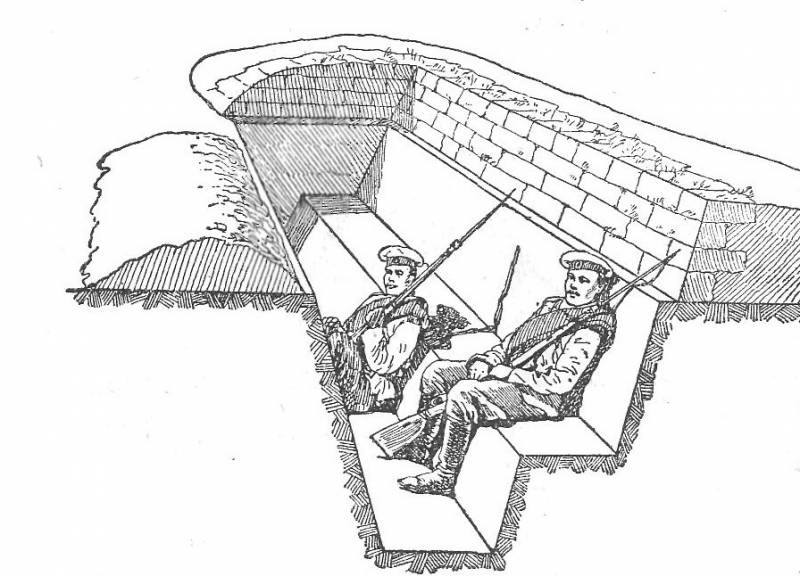
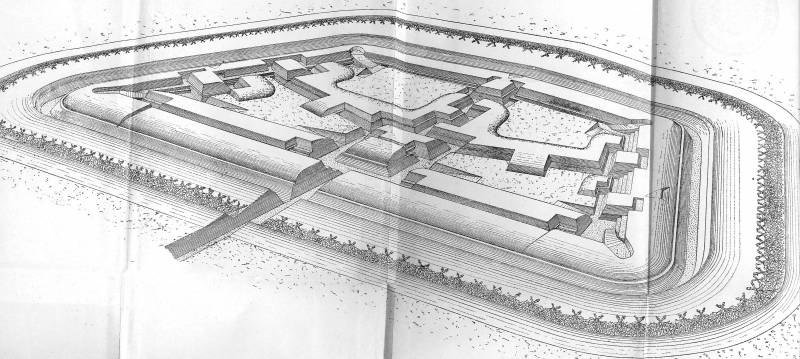

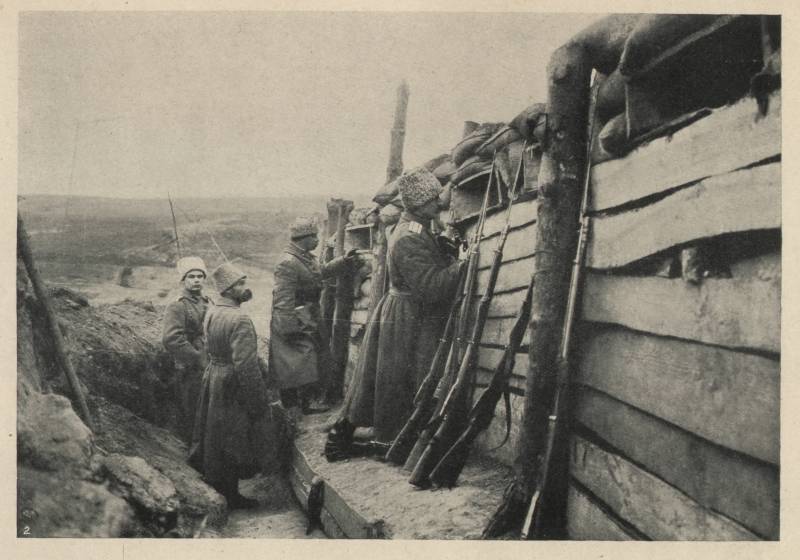
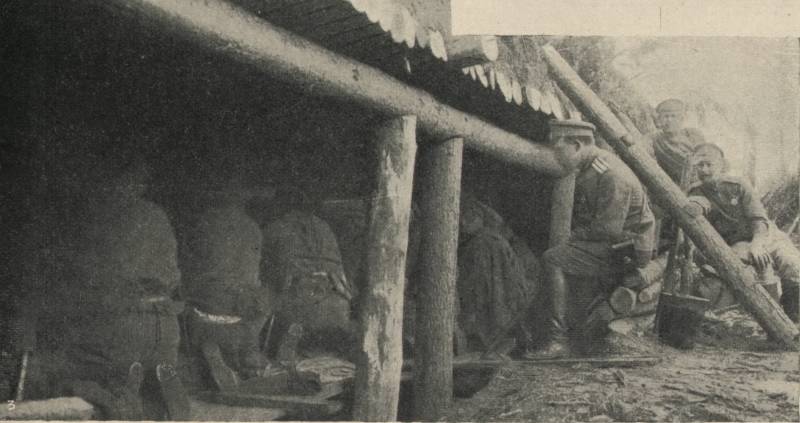
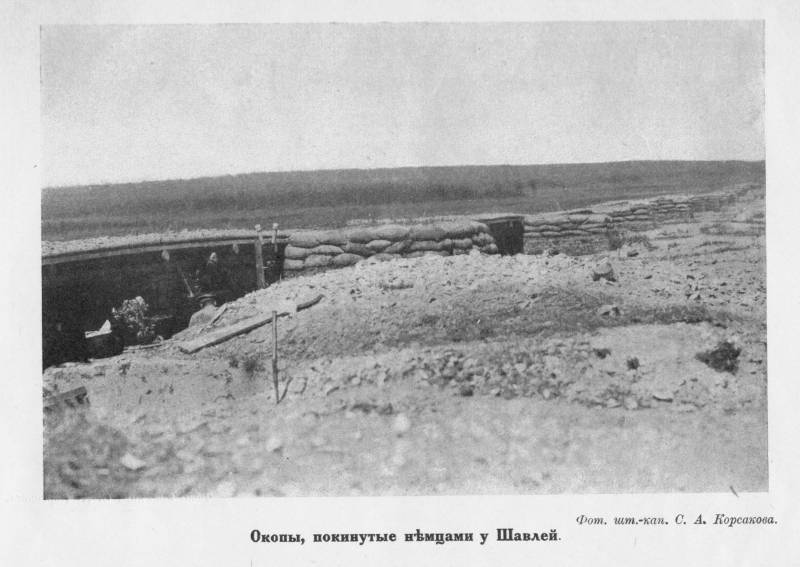
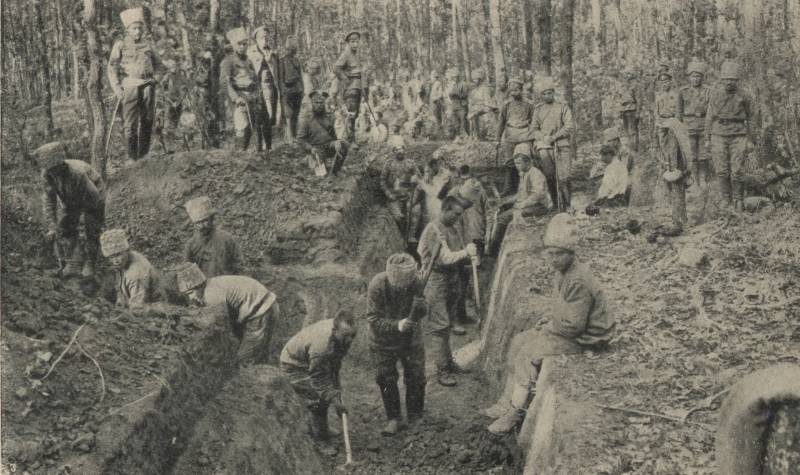
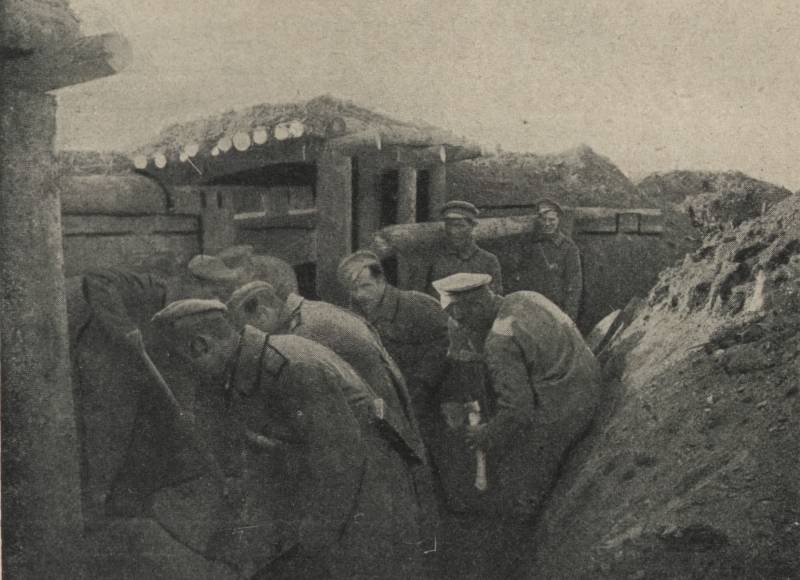
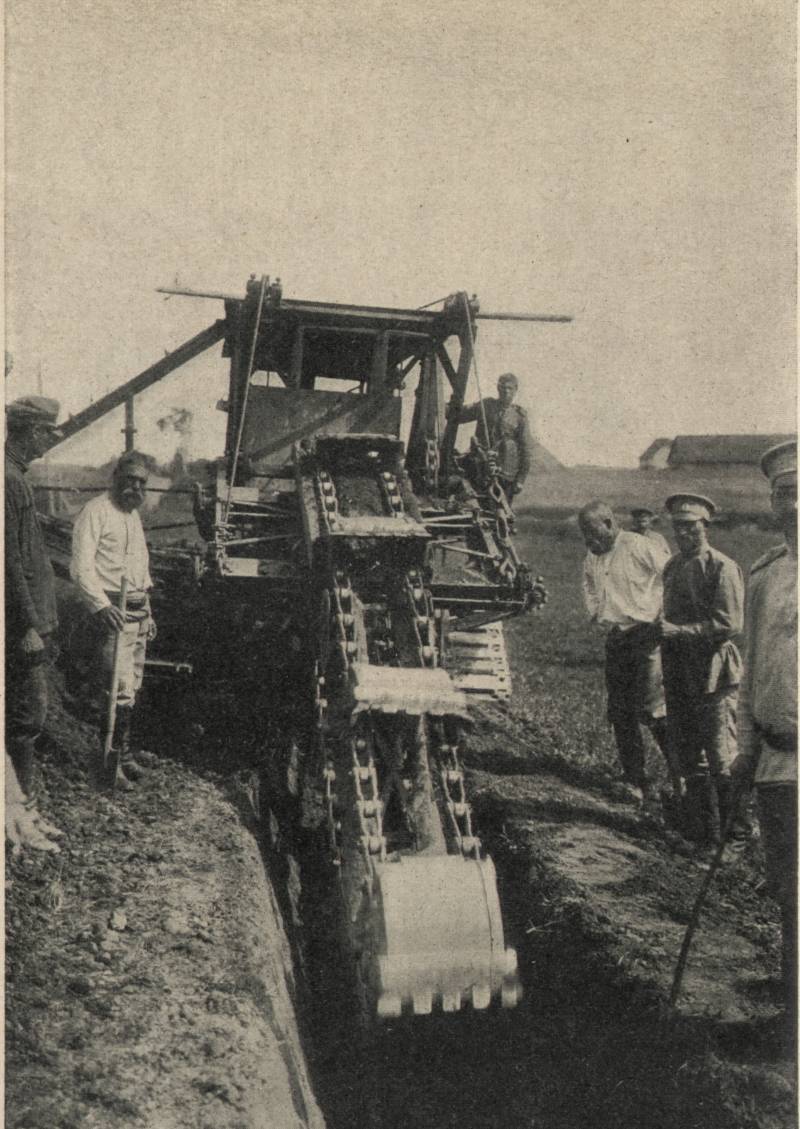
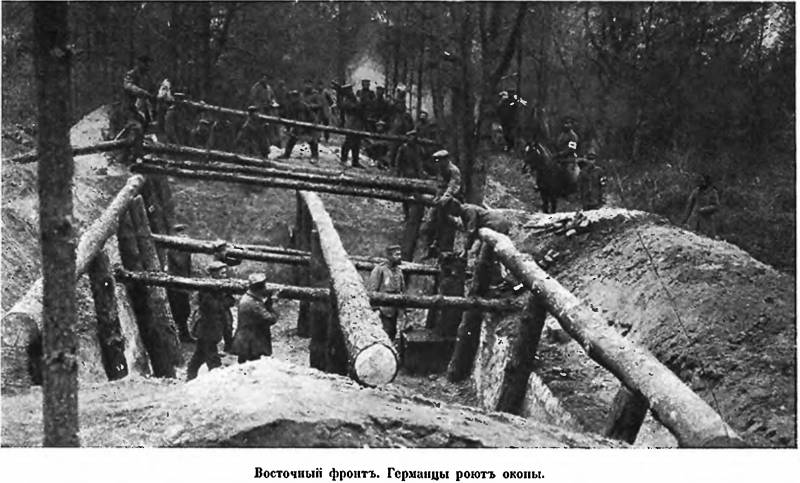
Information